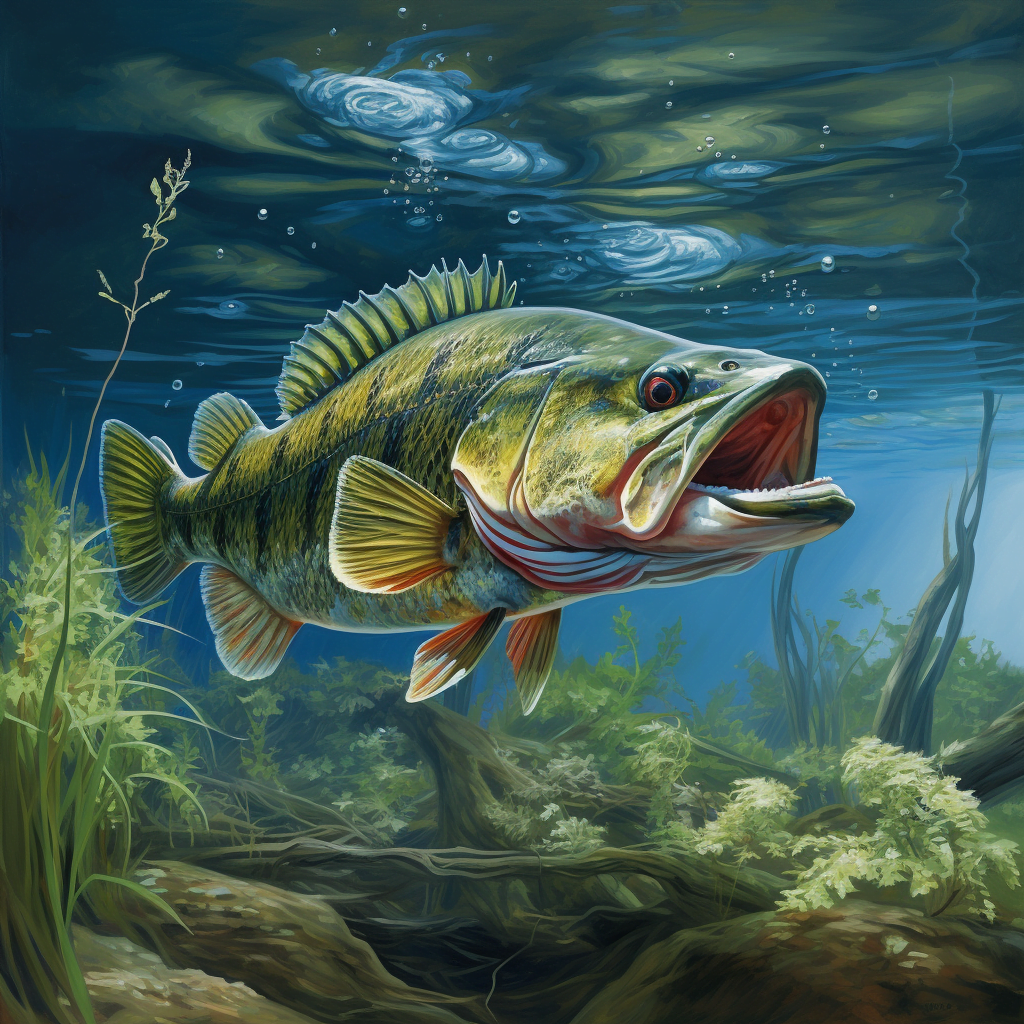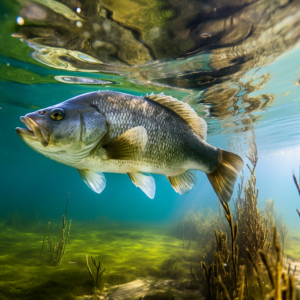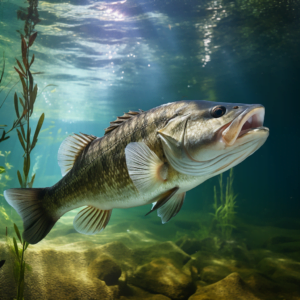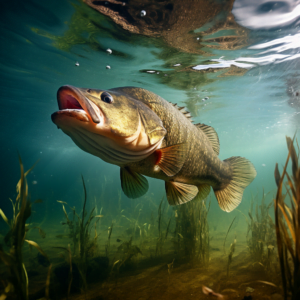Do you ever wonder why sometimes bass just don’t seem to be biting? It can be frustrating when you’re out on the water, trying different lures and techniques, but nothing seems to be working. Well, let me tell you, there’s actually quite a mystery behind why bass are not biting. In this article, we’re going to dive deep into the world of bass fishing and explore some of the factors that may be causing this phenomenon.
When it comes to bass not biting, there are a few key factors to consider. One of the most common reasons is the weather. Bass are known to be more active during certain weather conditions, such as when it’s cloudy or slightly overcast. So if you’re out on a clear, sunny day, chances are the bass might be a bit more sluggish and less inclined to bite. Another factor to consider is the time of day. Bass are typically more active during early morning and late evening, so if you’re fishing during the middle of the day, you might have a harder time getting them to bite.
But that’s not all – the type and color of your lure can also play a role in whether or not bass are going to bite. Sometimes, bass can become quite picky and only go for specific types of bait. So if you’re using the wrong lure, you may not have much luck. Additionally, the color of your lure can make a big difference. Bass are visual creatures, and certain colors may attract them more than others. So it’s worth experimenting with different colors to see what works best on any given day.
In conclusion, there are various factors that can contribute to bass not biting. It could be the weather, the time of day, or even the type and color of your lure. The key is to stay patient and be willing to try different approaches. There’s always more to learn when it comes to bass fishing, so keep exploring and honing your skills. In our upcoming article, we’ll delve even deeper into some specific techniques and strategies that can increase your chances of getting those elusive bass to bite. Stay tuned!
| Weather Condition | Time of Day | Lure Type | Bass Biting Behavior |
|---|---|---|---|
| Sunny | Morning | Topwater Lure | Moderate |
| Overcast | Evening | Plastic Worms | High |
| Rainy | Afternoon | Spinnerbaits | Low |
| Cloudy | Midnight | Jigs | Low |
| Windy | Evening | Crankbaits | Moderate |
| Calm | Morning | Soft Plastics | High |
| Sunny | Afternoon | Lipless Crankbaits | Low |
The Mystery Behind Bass Not Biting
Understanding the behavior of bass can be a challenging task for any angler. One day, they may be biting everything in sight, and the next day, they seem completely disinterested. It can leave anglers scratching their heads, wondering what they are doing wrong. In this article, we will delve into the factors that affect bass biting, the psychological reasons behind their behavior, the environmental factors that impact their feeding, and provide tips and techniques to increase your success rate. So, let’s dive in and unravel the mystery behind bass not biting.
Factors Affecting Bass Biting
There are several factors that can influence whether bass bite or not. These include water temperature, time of day, water clarity, and weather conditions. Let’s take a closer look at each of these factors.
Water Temperature
Water temperature plays a crucial role in bass feeding behavior. Bass are cold-blooded creatures, meaning their body temperature is regulated by the surrounding water. As water temperatures rise, their metabolism increases, making them more active and hungry. Conversely, when the water is cold, their metabolism slows down, and they become less likely to bite. Understanding the optimal water temperature range for bass in your fishing area can greatly improve your chances of success.
Time of Day
The time of day also affects bass biting behavior. Bass are generally more active during low-light conditions, such as early morning and late evening. During these times, they are more likely to be searching for food and are more responsive to lures. As the sun rises and sets, the bass may retreat to deeper water or seek shelter under vegetation, becoming less willing to bite. Being on the water during the prime feeding times can significantly increase your chances of getting a bite.
Water Clarity
Water clarity is another important factor to consider when trying to understand bass behavior. In clear water, bass rely heavily on their sight to locate and strike prey. They are more cautious and can easily detect anything suspicious. On the other hand, in murky or stained water, bass rely more on their other senses, such as their lateral line, which detects vibrations in the water. Adjusting your lure selection and presentation based on water clarity can make a significant difference in triggering a bite.
Weather Conditions
Weather conditions, such as atmospheric pressure, wind, and cloud cover, can have a significant impact on bass fishing. Bass are sensitive to changes in barometric pressure, and they often become more active and feed more aggressively before a storm front moves in. Additionally, wind can generate waves and create a more favorable feeding environment for bass. Cloud cover can also provide bass with a sense of security, making them more willing to venture out and feed. Understanding how weather conditions can influence bass behavior can give you a strategic advantage on the water.
Psychological Reasons for Bass Not Biting
In addition to external factors, there are also psychological reasons why bass may not be biting. These include their feeding patterns, lure preferences, and conditioning to angler pressure.
Feeding Patterns
Bass have different feeding patterns throughout the year, depending on the availability of prey and their biological needs. Understanding these patterns can help you anticipate when bass are more likely to bite. For example, during the spawn in spring, bass are more focused on reproduction and protecting their nests, making them less interested in feeding. On the other hand, during the fall, bass feed aggressively to build up their energy reserves for the upcoming winter. Adjusting your fishing techniques to match the bass’s current feeding patterns can greatly increase your chances of success.
Lure Preference
Bass can be selective when it comes to the lures they choose to strike. They may show a preference for certain colors, sizes, and types of lures based on their feeding preferences and the prevailing conditions. Experimenting with different lure options and paying attention to the bass’s response can help you determine what they are currently in the mood for. Don’t be afraid to switch things up and try different lures until you find the right combination.
Conditioning to Angler Pressure
Another psychological factor that can influence bass biting behavior is conditioning to angler pressure. Bass in heavily fished areas can become more wary and cautious, making them less likely to bite. They may have encountered various lures and experienced hook-ups in the past, leading them to become more cautious and selective in their feeding. Fishing in less pressured waters or using techniques that mimic natural food sources can give you an edge when targeting these educated bass.
Environmental Factors Impacting Bass Feeding
Apart from the psychological reasons, there are also environmental factors that can impact bass feeding. These include the availability of prey, habitat changes, and water oxygen levels.
Availability of Prey
The availability of prey plays a vital role in bass feeding behavior. Bass are opportunistic predators and rely on a steady supply of food to meet their dietary needs. If the prey population is low or the available prey is not abundant, bass may be less willing to bite. Understanding the local prey species and their distribution can help you identify the best fishing spots and select lures that imitate their natural appearance and behavior.
Habitat Changes
Changes in their habitat can also affect bass feeding behavior. For example, if the water levels in a lake or river fluctuate significantly, it can displace bass from their preferred feeding areas. Similarly, the presence of excessive vegetation or debris can limit their access to food. Knowing the specific habitat preferences of bass in your fishing area can help you locate and target them more effectively.
Water Oxygen Levels
Water oxygen levels have a direct impact on bass survival and feeding. Bass are highly reliant on dissolved oxygen in the water to meet their metabolic needs. In situations where water oxygen levels are low, such as during hot summer months or in heavily polluted waters, bass may become less active and less inclined to bite. Understanding the oxygen requirements of bass and targeting areas with optimal oxygen levels can increase your chances of success.
Adapting Techniques for Non-Feeding Bass
When faced with non-feeding bass, it is essential to adapt your techniques to entice a bite. Trying different lures, adjusting retrieval speed and depth, and even using live bait as an alternative can help trigger a response. Non-feeding bass may still exhibit curiosity or aggression towards passing lures, so experimenting with different presentations can make all the difference.
Tips for Increasing Bass Biting Success
To increase your bass biting success, there are several tips you can follow. Choosing the right fishing spots, varying presentation techniques, and observing bass movements are key strategies. Bass are highly adaptable creatures, and they will move to areas with optimal conditions for feeding. Paying attention to underwater structure, such as drop-offs, shallows, and submerged obstructions, can help you identify prime fishing spots. Varying your lure presentation by changing retrieval speed, pauses, and angles can also elicit a strike from a hesitant bass. Additionally, observing bass movements, such as chasing baitfish or lurking near structure, can provide valuable insight into their feeding patterns and increase your chances of success.
Seasonal Patterns and Bass Biting
Understanding the seasonal patterns of bass behavior is critical for successful fishing. Each season presents unique challenges and opportunities.
Spring – Spawn and Feeding Frenzy
Spring is a crucial time for bass, as it marks their spawning season. During this time, bass are focused on reproduction, and their feeding patterns change dramatically. As they build nests and guard their eggs, bass become less interested in feeding. However, there are still opportunities to catch them during the pre- and post-spawn periods when they feed heavily to regain their energy reserves.
Summer – Adjusting to Warm Water
Summer brings warmer water temperatures, which can make bass more lethargic. They tend to seek cooler, deeper waters or shade provided by vegetation during the hottest parts of the day. Fishing during early morning and late evening can be more productive during the summer months. Adjusting your presentation to slower or more finesse techniques can also yield better results.
Fall – Preparing for Winter
Fall is a time of transition for bass as they prepare for the winter months ahead. They become more active and aggressive in their feeding, as they need to build up their energy reserves. This makes fall an excellent time for fishing, as bass are more likely to strike a well-presented lure.

Winter – Slow and Methodical Approaches
Winter poses the greatest challenge for bass fishing, as they become less active and more selective in their feeding. Their metabolism slows down considerably, and they seek deeper water with more stable temperatures. During this time, slow and methodical fishing approaches, such as using jigs or live bait, can be the most effective.
Techniques for Challenging Situations
Fishing in heavily vegetated areas, targeting pressured and wary bass, and dealing with changing water conditions require specific techniques.
Fishing in Heavily Vegetated Areas
In heavily vegetated areas, such as lily pads, aquatic grasses, or submerged vegetation, bass can be more challenging to catch. It is essential to select lures that can effectively navigate through the vegetation without getting snagged. Weedless hooks, swimbaits, and topwater lures that mimic frogs or bugs can be effective choices in these situations.
Targeting Pressured and Wary Bass
When targeting pressured and wary bass, it is crucial to present lures that appear natural and non-threatening. Downsizing your lures, using more subtle colors, and opting for finesse techniques can help overcome their cautious nature. Furthermore, fishing during less crowded times or exploring less-fished areas can increase your chances of encountering less pressured bass.
Dealing with Changing Water Conditions
Changing water conditions, such as rising or falling water levels, can impact bass behavior. As the water levels change, bass may position themselves differently or adapt their feeding patterns. Staying observant and adjusting your fishing tactics to match the changing conditions can give you an advantage in these situations.
Understanding Local Bass Habitats
Understanding the specific habitats where bass reside is key to successful bass fishing. Whether you are fishing in lakes and reservoirs, rivers and streams, or ponds and small water bodies, each habitat has its own unique characteristics and challenges.
Lakes and Reservoirs
Lakes and reservoirs are home to a wide variety of bass habitats, including open water, shallow flats, drop-offs, and submerged structure. Understanding the underwater topography, locating areas with adequate cover, and identifying potential ambush points can lead to successful bass fishing in these larger bodies of water.
Rivers and Streams
Rivers and streams offer dynamic bass fishing opportunities, with moving water and ever-changing conditions. Bass can be found near current breaks, submerged logs, or undercut banks. Adapting your techniques to match the current speed, depth, and available cover can yield great results when fishing in rivers and streams.
Ponds and Small Water Bodies
Ponds and small water bodies provide more intimate fishing experiences and can be abundant with bass. They often have more limited space and structure, with areas such as weed beds, submerged trees, or rock piles attracting bass. Exploring the shoreline, casting near structure, and using finesse techniques can be effective strategies for fishing in these smaller bodies of water.
Conclusion
Understanding the factors that affect bass biting, the psychological reasons behind their behavior, the environmental factors impacting their feeding, and adapting your techniques accordingly can greatly enhance your bass fishing success. Remember, bass behavior is complex and can be influenced by various factors. Being adaptable, continuously learning, and observing bass movements and patterns will help you become a more skilled angler. So, head out to the water, armed with this newfound knowledge, and unravel the mystery behind bass not biting.
Fish on, and good luck!




